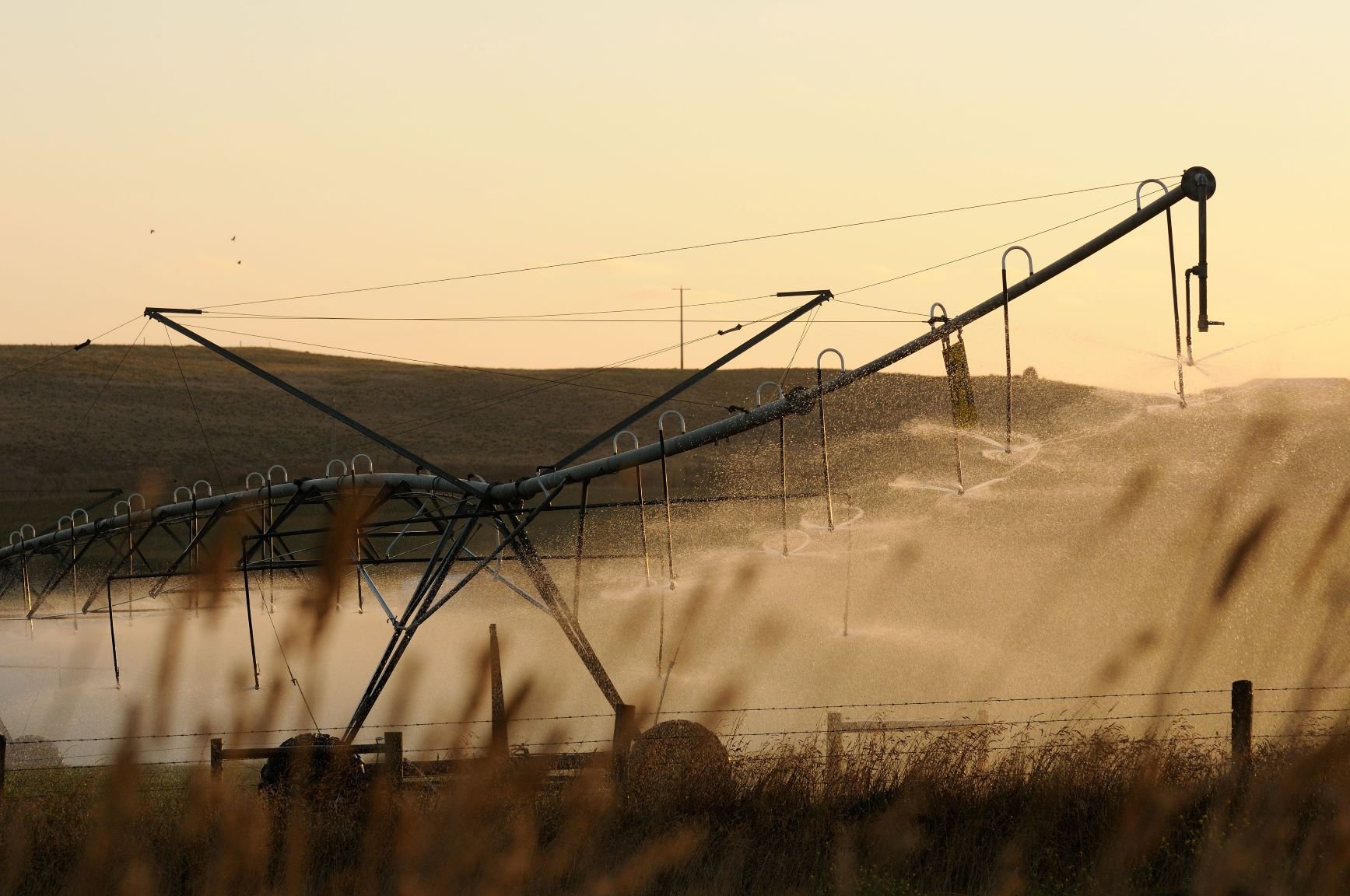When planning a Centre Pivot or Lateral Move (CPLM) system the following aspects need to be considered at the planning stage:
- Physical location (area, shape, topography, soil type)
- Water supply (flow rate, supply location, quality and quantity)
- Irrigable area (area to be developed, system capacity)
Land area: A typical centre pivot system has a span of 300 to 400 metres long and irrigates 28 to 50 ha. However, they can be as short as a single-span 35 metre unit or as long as 800 metres with 18 to 20 towers irrigating approximately 200 ha.
However, the large systems have tend to have very high average application rates at the outside of the circle that may exceed the infiltration rate of the soil and consequently cause run-off.
Land shape: Centre Pivot systems irrigate a circle, which covers 78% of a square. This can be an issue on dairy farms with limited available land. End guns can be used on Centre Pivots to effectively increase the irrigated area.
Recent increases in nozzle technology have meant a combination of specialised end nozzles and end guns can provide an efficient increase in the wetted area that in the past end guns alone struggled to provide.
Lateral Move systems can be a suitable option to irrigate rectangular areas, providing the topography suits, as they can cover a greater percentage of a paddock. However, the longer the paddock the higher the system capacity required of the system, and this can result in high average application rates and water infiltration problems.
Land slope: Centre Pivots can irrigate significantly undulating land. However, it is important to ensure the machine is designed to meet the flow and pressure requirements at its highest point on the landscape.
If any rise and extra head loss is not taken into account the machine could be under-performing at those points, causing less water to be applied and impacting production and yield.
Some minor earthmoving may be needed to connect depression areas and provide drainage for runoff from rainfall events.In some cases, where the development of border check irrigation would require significant cut and fill, the cost per hectare of installing a centre pivot can be lower than border-check irrigation.
Soil type: Centre Pivots are able to irrigate any soil type. However, sprinklers should be selected to suit soil infiltration characteristics, as excessive average application rates can cause runoff. It is desirable for the pivot to irrigate one soil type or soil types with similar infiltration characteristics.
Planning permit: A planning permit may be required to do some earthworks and remove any native vegetation.
Water supply: The water supply flow rate and the timing and duration of delivery for CPLM systems can be quite different to those required for border-check irrigation. These systems often require more frequent, but lower flow rates over a longer period of time.
For example, where a block of pasture might be irrigated once a fortnight over a 48 hour period under border-check irrigation, a similar block may be irrigated twice a week over 96 hours with CPLM systems.
It is essential to understand the available water supply rate before designing the irrigation system. Will water be available as required? You will need to ensure you can get the flow rate, duration and frequency when you need it.
It is important to note the distance from the water source to the Centre Pivot may impact on capital and running costs. Both capital and operating costs are minimised if the machine is located close to the supply.
Water quality: Poor quality water can reduce the life of a machine and affect crop growth. It must be analysed in the planning stage to determine its potential to damage a machine and affect the crop. Poor water quality can be from chemical, biological or physical issues.
System Capacity: The design system capacity is the maximum possible depth of water the system can supply to the entire area in 24 hours, expressed as mm/day. For example, a machine with a system capacity of 12mm/day applying 30mm in a single pass would require 2.5 days to irrigate the full area (30/12 = 2.5).
System capacity depends on the flow rate of the water supply and the area of crop irrigated in any one cropping season. It must be matched to what crop will be grown under it and its water use otherwise it wont be able to keep up with the plants peak demand, resulting in reduced production.
Conclusion
When considering such a large investment as a CPLM machine it is important to do your homework and due diligence. A bit of planning and research up front will save you in the long run from lost time and production, headaches from breakdowns and poor performance.
Keep checking back to IrrigatingAg for more in this series on CPLM systems!
Content sources and further information

